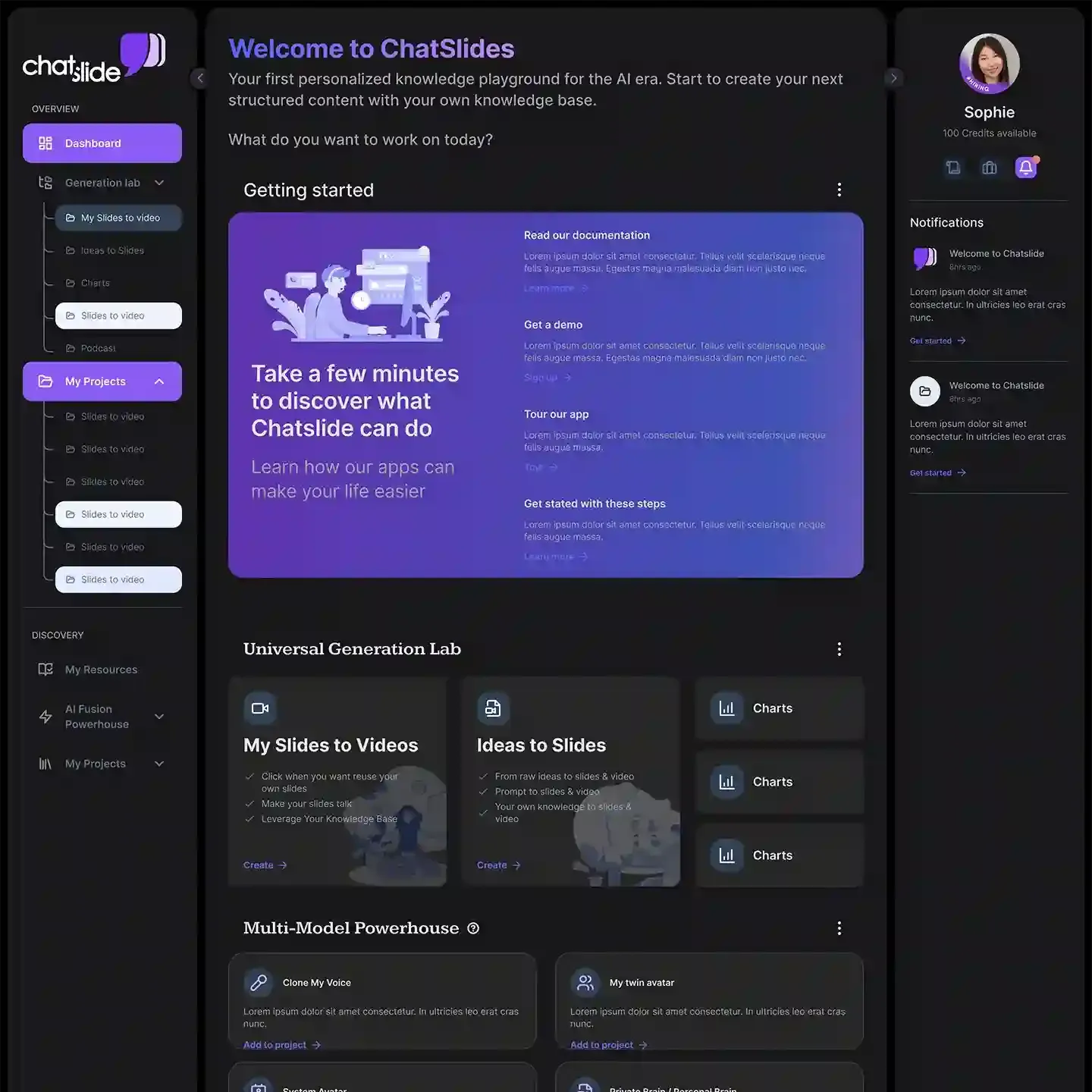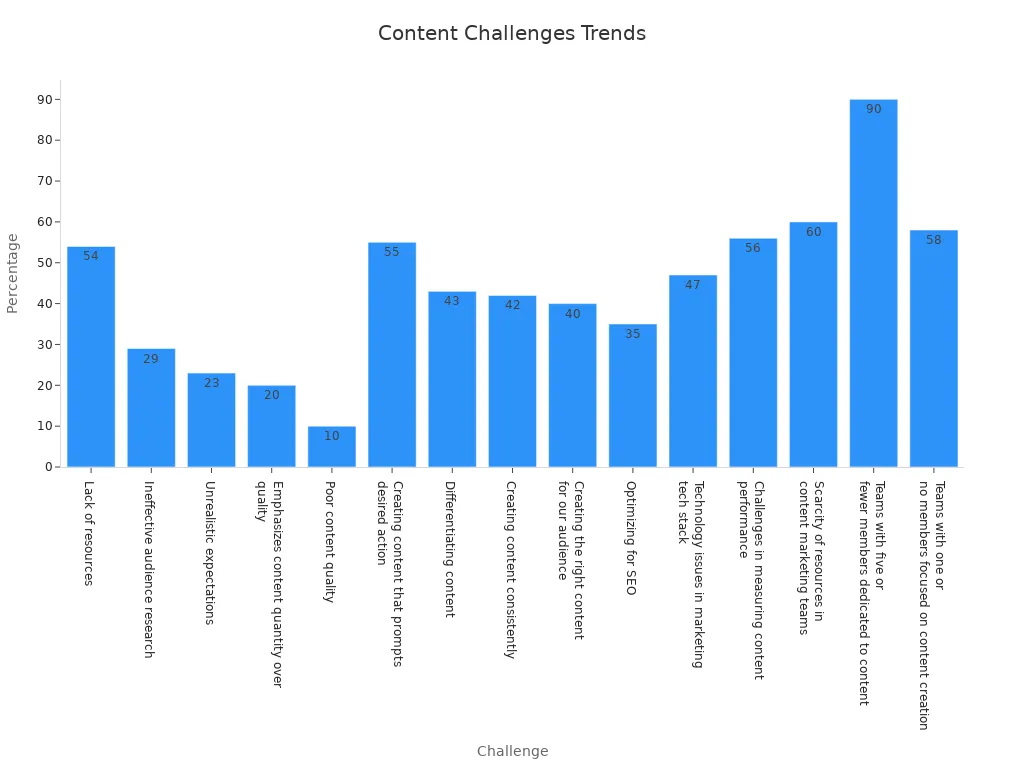
Content creation often feels overwhelming due to common challenges. You may encounter creative blocks or workflow bottlenecks that slow progress. Adapting to changes while maintaining consistency adds another layer of difficulty. Time constraints remain one of the biggest hurdles. Crafting high-quality content requires effort, from brainstorming ideas to refining the final draft. Tight schedules often lead to rushed outputs.
Intelligent typesetting offers a solution. By leveraging AI and automation, it improves efficiency, ensures consistency, and enhances readability. It also adapts content seamlessly for various platforms, making your work more impactful.
Key Takeaways
Smart typesetting handles boring tasks, giving you more time for creativity.
Keeping things the same on all platforms helps people trust you and know your brand.
Better fonts and layouts make reading easier and keep people interested.
Changing content to fit different platforms is simple with smart typesetting, helping more people see your message.
AI tools can greatly improve your content, making it look neat and professional.
Challenges in Content Creation

Time Constraints
Time constraints are one of the most common challenges you face in content creation. The demand for high-quality content continues to grow, putting pressure on you to deliver quickly. Over 60% of content marketers report being tasked with more work while having the same or fewer resources. This often leads to rushed outputs, which can compromise quality. Generative AI has become a popular solution, with 50% of marketers using it to draft content and 48.5% relying on it for brainstorming. These tools help you save time by automating repetitive tasks, allowing you to focus on creativity and strategy.
Maintaining Consistency
Consistency is key to building trust and engagement with your audience. However, maintaining it across different content types and platforms can be challenging. Analytics tools can provide insights into metrics like audience engagement, conversion rates, and brand mentions. Regularly analyzing this data helps you assess whether your content aligns with your goals. Despite these tools, 42% of marketers still struggle to create consistent content. This highlights the need for innovative solutions that streamline workflows and ensure uniformity in tone, style, and quality.
Enhancing Readability
Readability plays a crucial role in keeping your audience engaged. Writing that is clear and easy to understand helps you connect with a broader audience. For example, readability tests can highlight areas for improvement, ensuring your content is accessible. Proper use of headings, bullet points, and visuals also improves readability. Studies show that enhancing readability boosts user engagement and overall experience.

By addressing these challenges, you can create content that resonates with your audience and achieves your objectives.
Adapting Content for Multiple Platforms
Adapting content for multiple platforms presents unique challenges. Each platform has its own audience preferences, technical requirements, and content formats. You need to tailor your content to fit these differences while ensuring your message stays consistent. This process can feel overwhelming, especially when managing multiple platforms simultaneously.
To succeed, you must focus on key aspects of platform-specific adaptation:
Consistency in messaging ensures your audience recognizes your brand across platforms.
Tailoring content to fit unique platform features improves communication. For example, short captions work well on Instagram, while detailed articles perform better on LinkedIn.
Evaluating success through metrics like audience engagement, conversion rates, and brand mentions helps you refine your strategy.
Using intelligent typesetting tools can simplify this process. These tools analyze platform requirements and automatically adjust your content. For instance, they can resize images, reformat text, or optimize layouts for mobile and desktop users. This saves you time and ensures your content looks professional everywhere.
You also benefit from automation when managing updates. If you need to revise your content, intelligent typesetting applies changes across all platforms instantly. This eliminates the risk of outdated information appearing on one channel while another remains current.
By leveraging these tools, you can adapt your content efficiently without sacrificing quality. Your audience will enjoy a seamless experience, no matter where they engage with your brand.
Understanding Intelligent Typesetting
What is Intelligent Typesetting?
Intelligent typesetting is a modern approach that uses AI to enhance the process of arranging text and visuals. Unlike traditional methods, it automates tasks like layout generation, font selection, and content adaptation. This makes it faster and more efficient. For example, AI-powered systems analyze your content and adjust its presentation to improve readability and engagement.
A key component of intelligent typesetting is Natural Language Processing (NLP). This technology allows the system to understand your text and make decisions about its layout. Whether you’re creating a newsletter or a presentation, intelligent typesetting ensures your content looks polished and professional.
Definition/Metric | Description |
|---|---|
Intelligent Typesetting | A modern approach to typesetting that incorporates AI technology to enhance the typesetting process. |
Digital Typesetting | The use of digital software to replace traditional mechanical typesetting, making it accessible to a wider audience. |
AI-Powered Typesetting | Utilizes AI tools for automating layout generation, semantic analysis, and content optimization. |
Key Features of Intelligent Typesetting
Intelligent typesetting offers several features that simplify your workflow:
Natural Language Processing (NLP): Helps the system analyze your text and make layout decisions.
Dynamic Typography: Adjusts font size, spacing, and alignment for better readability.
Content Adaptation for Multiple Platforms: Optimizes your content for different devices, ensuring it looks great everywhere.
Reader Feedback and Customization: Uses feedback to personalize the reading experience.
These features not only save time but also improve the quality of your content. For instance, dynamic typography ensures your text is easy to read, while platform adaptation guarantees consistency across devices.
How Intelligent Typesetting Works
Intelligent typesetting works by combining AI technologies with advanced algorithms. When you input your content, the system analyzes it using NLP. It then applies layout settings, selects fonts, and adjusts typography based on predefined guidelines. This process happens in seconds, allowing you to focus on your message instead of formatting.
For example, if you’re creating a presentation, the system can automatically generate slides with the right font sizes and layouts. It also adapts your content for different platforms, ensuring it looks professional on both mobile and desktop screens. By automating these tasks, intelligent typesetting reduces production time and enhances efficiency.
How Intelligent Typesetting Solves Content Creation Challenges
Improving Efficiency
Intelligent typesetting transforms your workflow by automating repetitive tasks. Instead of spending hours adjusting layouts or formatting text, you can focus on refining your message. This approach saves time and energy, allowing you to meet tight deadlines without sacrificing quality. For example, AI-driven systems automatically adjust font sizes, line spacing, and color contrasts. These adjustments improve readability and accessibility, making your content more user-friendly.
Designers and editors benefit from this automation by dedicating more time to creative tasks.
The system ensures consistency across all formats, reducing the need for manual corrections.
By streamlining these processes, intelligent typesetting enhances efficiency and helps you deliver polished content faster.
Ensuring Consistency
Maintaining a consistent tone and style across multiple platforms can feel overwhelming. Intelligent typesetting simplifies this challenge by applying uniform formatting rules to your content. Whether you’re creating a blog post, a presentation, or a social media update, the system ensures your work aligns with your brand’s identity.
For instance, intelligent typesetting uses predefined guidelines to standardize font styles, colors, and layouts. This eliminates discrepancies that might confuse your audience. You can also make updates effortlessly. If you need to revise your content, the system applies changes across all formats instantly. This ensures your message remains consistent everywhere.
Enhancing Readability
Readability plays a crucial role in engaging your audience. Intelligent typesetting enhances this aspect by optimizing the visual presentation of your content. It adjusts typography, spacing, and alignment to make your text easier to read. These changes improve the overall user experience and keep your audience focused on your message.
For example, the system can break long paragraphs into shorter sections or add bullet points for clarity. It also ensures that visuals and text complement each other, creating a balanced layout. By prioritizing readability, intelligent typesetting helps you connect with your audience more effectively.
Adapting Content for Multiple Platforms
Adapting your content for multiple platforms ensures your message reaches a wider audience effectively. Each platform has unique requirements, and intelligent typesetting simplifies this process by automating adjustments. You no longer need to manually reformat your content for different devices or platforms. Instead, the system handles these tasks, saving you time and effort.
Tip: Tailoring your content to fit platform-specific features improves audience engagement and strengthens your brand presence.
Intelligent typesetting uses advanced algorithms to optimize your content for various platforms. It adjusts font sizes, line spacing, and color contrasts to enhance readability and accessibility. These changes ensure your content looks professional and is easy to consume, whether viewed on a smartphone, tablet, or desktop. Customization options also allow you to cater to diverse reader preferences, broadening your audience reach.
AI technology enhances readability and accessibility in typesetting design.
Algorithms adjust visual elements like font sizes and spacing for optimal comfort.
Customization ensures your content appeals to different viewing options.
For example, if you create a presentation, intelligent typesetting can automatically resize images and reformat text for social media, email, or web platforms. This consistency across channels builds trust with your audience. When updates are needed, the system applies changes instantly across all platforms, ensuring your content remains accurate everywhere.
By leveraging intelligent typesetting, you can adapt your content seamlessly. Your audience will enjoy a cohesive experience, no matter where they interact with your brand.
Benefits of Intelligent Typesetting

Streamlined Content Creation
Intelligent typesetting simplifies your content creation process by automating repetitive tasks. You no longer need to spend hours adjusting layouts or formatting text manually. Instead, the system handles these tasks for you, allowing you to focus on crafting your message. For example, it can automatically adjust font sizes, align text, and optimize spacing. These features save time and reduce the risk of errors.
You also benefit from real-time adjustments. If you need to make changes, the system updates your content instantly. This ensures that your work remains consistent and polished. By streamlining these steps, intelligent typesetting helps you produce high-quality content faster and with less effort.
Higher Quality Content
The quality of your content improves significantly with intelligent typesetting. The system enhances readability by optimizing typography, spacing, and alignment. It ensures that your text is easy to read and visually appealing. For instance, it can break long paragraphs into shorter sections or add bullet points to highlight key ideas. These adjustments make your content more engaging.
Visual elements also play a crucial role. Intelligent typesetting ensures that images, charts, and other visuals complement your text. This creates a balanced layout that captures your audience’s attention. By prioritizing clarity and aesthetics, intelligent typesetting elevates the overall quality of your work.
Scalability and Flexibility
Intelligent typesetting adapts seamlessly to changes in content volume. Whether you’re creating a single document or managing large-scale projects, the system maintains efficiency and consistency. It adjusts layouts and typography automatically, ensuring that your content looks professional across all formats.
Feature | Benefit |
|---|---|
Enhanced Efficiency | AI-powered typesetting increases the speed of document creation, allowing for quick adaptation to volume changes. |
Consistency and Precision | Maintains uniformity in design across documents, crucial for large-scale content production. |
Improved Readability | Customizes text presentation for various platforms, enhancing accessibility for diverse audiences. |
Dynamic Typography | Automatically adjusts typographical elements for optimal readability, adapting to different content volumes. |
User Feedback Integration | Gathers and utilizes reader preferences to personalize content, ensuring relevance as content volume changes. |
This flexibility allows you to scale your content creation efforts without compromising quality. Whether you’re working on a small project or a global campaign, intelligent typesetting ensures that your content meets the highest standards.
Intelligent typesetting revolutionizes content creation by addressing common challenges. It improves efficiency, consistency, readability, and adaptability, enabling you to produce high-quality content effortlessly. AI-driven tools streamline workflows, saving time and reducing errors. For instance, a survey by the World Association of News Publishers revealed that AI reduced newsletter production time by 80%. This technology ensures your content remains polished and optimized for all platforms. By adopting intelligent typesetting, you can transform your creative process and achieve exceptional results.
FAQ
What is the main purpose of intelligent typesetting?
Intelligent typesetting helps you create polished, professional content quickly. It automates tasks like layout design, font selection, and platform adaptation. This ensures your content is consistent, readable, and optimized for various platforms.
Can intelligent typesetting work with different content types?
Yes! Intelligent typesetting adapts to various content types, including presentations, blogs, newsletters, and social media posts. It adjusts layouts and typography to suit the specific format, ensuring your content looks great everywhere.
How does intelligent typesetting save time?
It automates repetitive tasks like formatting, resizing, and layout adjustments. For example, it can instantly reformat a document for mobile or desktop use. This allows you to focus on crafting your message instead of spending hours on design.
Is intelligent typesetting suitable for beginners?
Absolutely! Intelligent typesetting tools are user-friendly and require no advanced technical skills. They guide you through the process, making it easy to create professional-quality content, even if you’re new to content creation.
Can intelligent typesetting improve audience engagement?
Yes, it enhances readability and visual appeal, which keeps your audience engaged. Features like dynamic typography and platform-specific optimization ensure your content is accessible and enjoyable, helping you connect with your readers effectively.

I like the efforts you have put in this, regards for all the great content.
I appreciate you sharing this blog post. Thanks Again. Cool.
Awesome! Its genuinely remarkable post, I have got much clear idea regarding from this post .